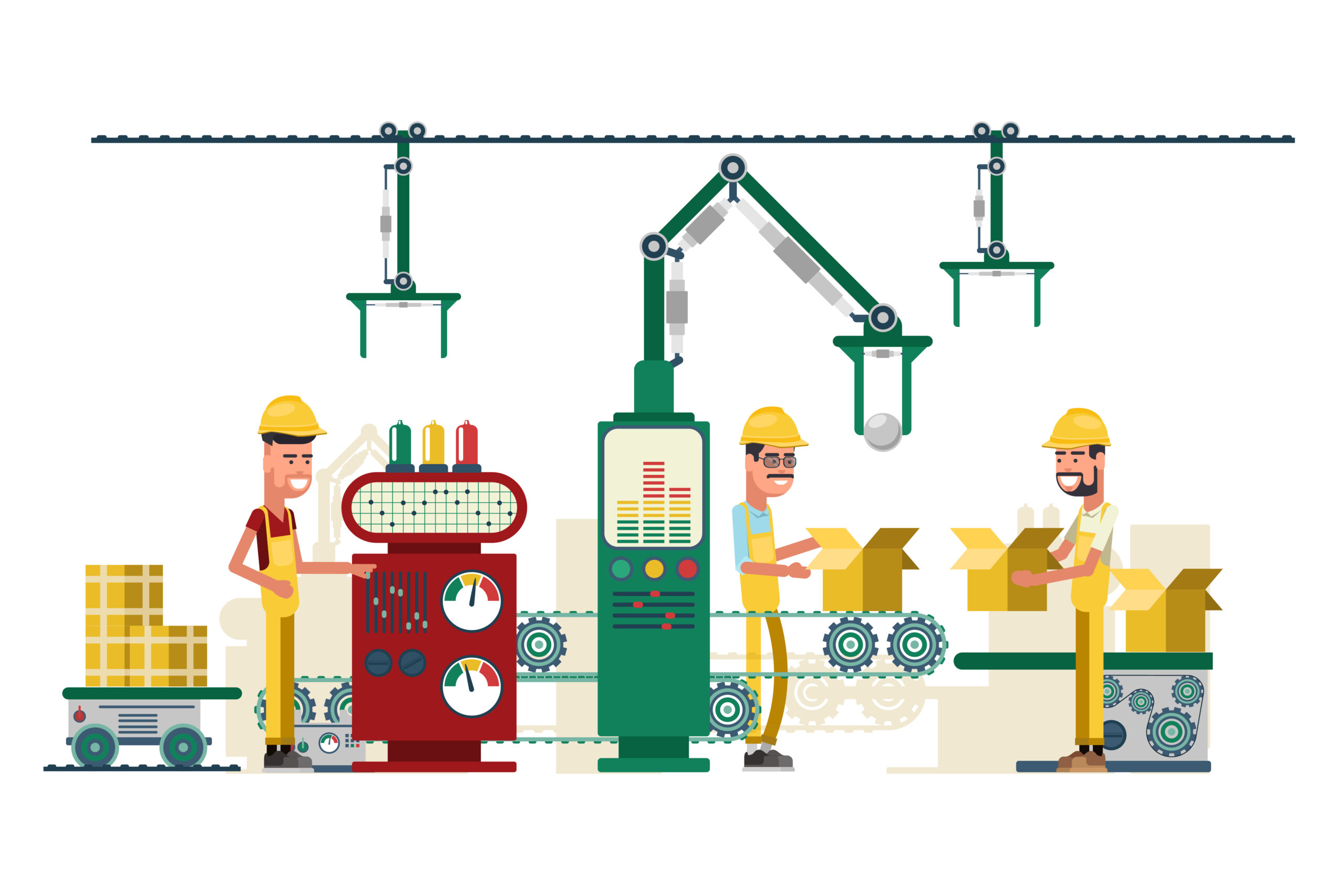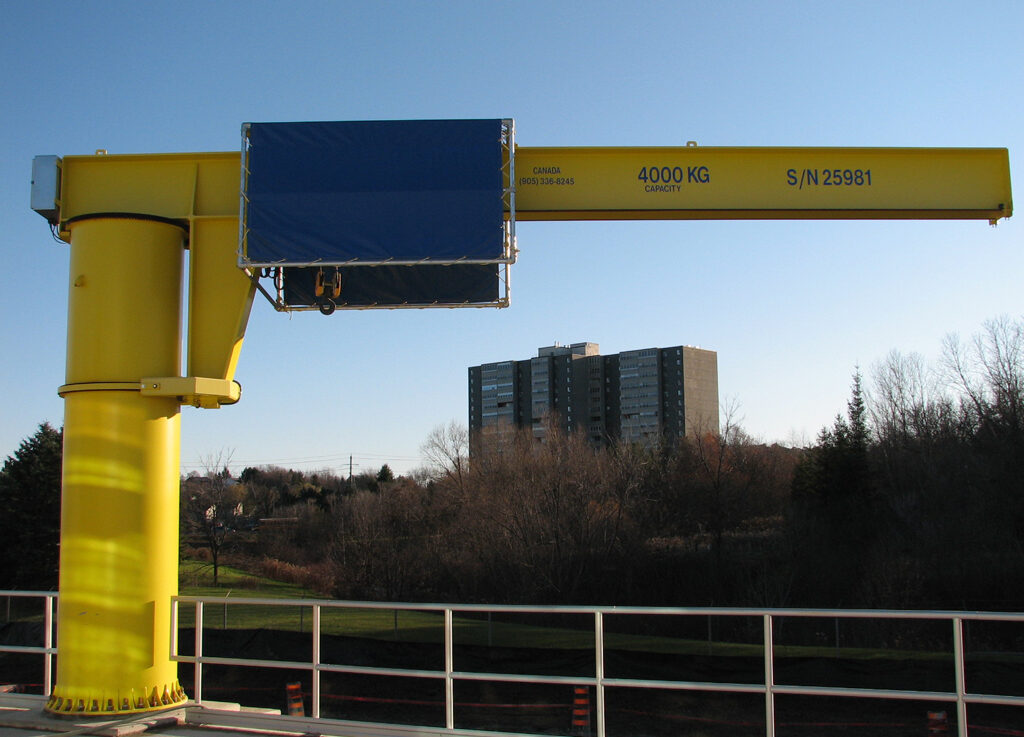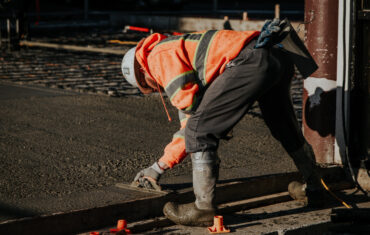Jib cranes provide an efficient method for moving loads around a workspace or facility, offering various size, load capacity, rotation speed, and mounting style options to choose from.
Wall-mounted jibs are easy to set up and don’t require special foundation work like their freestanding counterparts do. These systems typically operate indoors without interfering with overhead systems.

Lifting
Jib cranes provided by crane companies UK come in various styles and capacities, but they’re best known for being able to lift loads that other lifting devices can’t. Additionally, their manoeuvrability allows them to access hard-to-reach spaces where productivity and efficiency increase significantly.
Jibeam cranes are versatile industrial tools often employed in manufacturing and assembly operations to move heavy machinery or components into place for assembly or disassembly. Additionally, warehouses and distribution centres may use them to unload trucks from storage areas or move materials between locations.
A jib crane is a compact device that can easily be installed almost anywhere within production facilities, making it the ideal solution for facilities with limited floor space where adding larger cranes would be impractical. Jibs may also supplement existing lifting systems, such as monorail or overhead bridge cranes, by augmenting their capacities.
The most frequently seen type of jib crane is the column-mounted variety. This design consists of a vertical column made up of steel poles connected by cables to an outwardly protruding main lifting arm known as a boom or reach that extends out from a main column pillar and serves as a platform for hoists and trolleys.
A jib can be operated either manually or powered, with most models featuring buttons that enable operators to control rotation, trolley movement, and hoist lowering and lifting. Some cranes even come equipped with adjustable rotation stops that help prevent their booms from striking nearby equipment during use.
Freestanding jib cranes can be mounted directly to the floor or wall-mounted for mast-style operation, although wall-mounted or mast-style options also exist. When selecting either option, work closely with your supplier to identify construction details like the thickness of the concrete floor as well as the desired capacity, so they can ensure your crane can support its load effectively. Unlike other forms of cranes, freestanding designs typically require an individual foundation, while wall-mounted designs can simply be secured directly against walls or building pillars without needing special bases.
Shifting
Jib cranes by crane companies in the UK are specially crafted machines used to facilitate the moving of heavy loads. They may be utilised between work areas or added as additional lifting capacity when required.
Jib cranes can be used to lift and move various items, including machinery, equipment, and containers. Customization options also make these cranes highly adaptable, an essential way to guarantee both the safety and efficiency of any operation.
When operating a jib crane, it is vital that users follow the specific lifting process outlined by their manual or manufacturer. Furthermore, keeping your load free of obstructions or personnel while moving is also incredibly important to help ensure this happens safely. For optimal use of your crane in this instance, clear a path at least two feet wide around where you intend to place it so there is enough room to manoeuvre your load without endangering anyone nearby or risking injury to others.
Jib cranes consist of two main parts: the mast and boom. The mast can either be freestanding or mounted onto a wall and is typically made of welded steel pipe; its attachment points connect directly with its hoist mechanism, which can either be manually operated or powered for support; and finally, the crane can be rotated into position to reach desired locations, with maximum safe working loads (SWL) set as the maximum limit on rotations.
A jib crane can be powered either by electricity or air, with each type having different power requirements that depend on its design. A representative can assist in selecting which power source will best meet the needs of your facility. Most jib cranes utilise push-button controls, which enable operators to manage lifting motion, hoist positioning, and crane rotation from one central location.
Jib cranes can be found in various settings, from warehouses to manufacturing plants, construction sites, and shipyards. Their versatility and capacity to lift heavy items make them a popular choice, while small workspaces may benefit from using one to increase productivity and reduce the risk of accidents.
Placement
Jib cranes enable workers to efficiently lift and transport components between work stations without needing to walk long distances or use additional equipment, resulting in faster workflow, reduced manual labour hours, and a reduced risk of injury to employees.
Jib crane designs come in all shapes, sizes, and capabilities to meet the demands of different industries. Factors that contribute to choosing an ideal jib crane include how much weight they can support, their range of rotation, the number of articulating points, and more. When choosing one that best meets the needs of your business, it is important to take your workspace and work processes into consideration while considering whether you require low or regular headroom variation and whether or not your system will be wall-mounted or floor-standing.
Floor-mounted jib cranes typically consist of a hoist and trolley mounted to a pedestal on either the ground or side of a building column, providing easier accessibility with a longer reach than other types. However, their maximum angle of rotation typically stands at 180 degrees, so as not to overrun your application’s needs.
On the other hand, ceiling-mounted jib cranes typically offer more coverage and can support larger loads than their floor counterparts. While more expensive, they also fold out of the way when not in use to avoid blocking other equipment or interfering with them.
When choosing the ideal jib crane for your business, it is also essential to take into account its power requirements. To ensure an uninterrupted power source is available in case of a power outage or when outages do occur. In terms of control options for your jib crane—for instance, some feature a push-button controller that controls hoist movement as well as trolley positioning—keep these points in mind.
Maintenance
Jib cranes can be found in many applications where lifting or positioning of loads is required, including fitting and fabrication workstations, building maintenance, plant room maintenance, marine loading and maintenance, and machine centre loading and maintenance, to name but a few. Their combination of strength and compactness makes jib cranes the obvious choice in many instances.
A jib crane consists of a vertical support and a horizontal main lifting arm known as a boom. This extends from either a wall, floor, ceiling, or mast-style mount and supports a hoist mechanism.
Depending on the nature and available space of an application, jib cranes may feature either manual or powered rotation. Furthermore, to prevent collisions with nearby equipment and collisions being too frequent with rotating equipment, To achieve this purpose, many jib cranes incorporate adjustable rotation stops located nearer the outer two-thirds of their boom length to limit rotational speed and limit collisions with surrounding equipment.
Jib cranes play an invaluable role in moving loads from one location to the next, from storage areas to processing areas or between different parts of a facility. A jib crane can assist manufacturing and assembly operations by moving materials into hard-to-reach spots, such as under machinery or into corners where an overhead crane cannot reach, for instance.
A jib crane’s mast is typically constructed of steel or other robust materials and securely fastened to the base plate, floor, or wall of a building. Additionally, an arm-rotating mechanism containing gears, motors, and bearings allows horizontal rotation with smooth control.
Maintaining all components of a jib crane to ensure safe operation is of utmost importance, and can be accomplished through regular lubrication, fluid changes, and inspection records. By performing these simple maintenance tasks regularly, you can reduce downtime and increase productivity. Regular cleaning and maintenance also prevent electrical problems like poor contacts, graphite dust buildup, or corrosion of crane controls or pendants that could occur due to poor maintenance practices.






